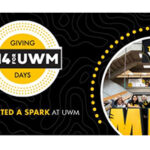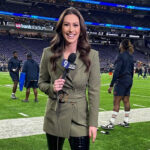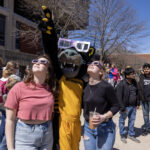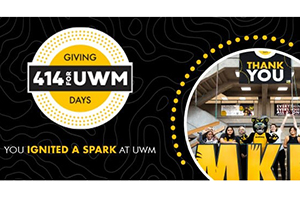Some students come to UWM knowing exactly what they want to do. Other undergraduate researchers find a career field they’re passionate about through hands-on work with faculty mentors.
Last year, the university, which is in the top rank of research institutions in the country, offered more than 750 research opportunities in hundreds of fields to both groups.
Out of all these dedicated young researchers, five were selected for the Senior Excellence in Research Awards. Here’s what those five have accomplished (so far):
Jessye Hale
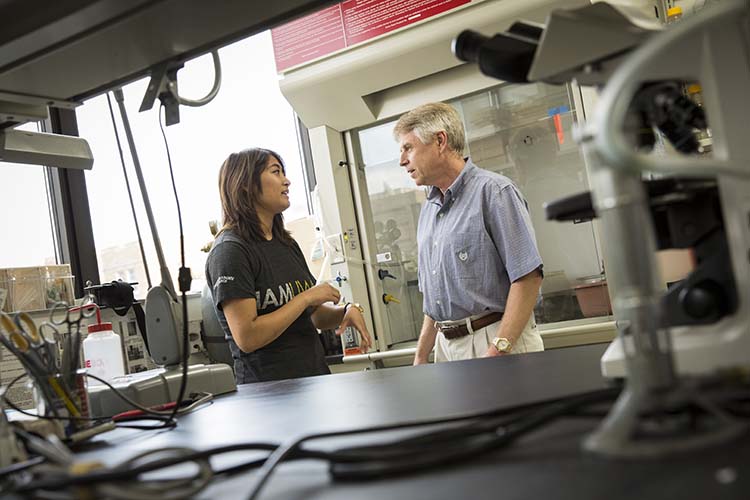
Jessye Hale was considering a number of universities when she received an invitation to take part in the summer undergraduate research program — UR@UWM— before she even came to UWM. She had already taken some UWM science courses her last two years of high school, and was looking to continue in that field in college.
“The ability to do research right off the bat, even before I was starting my freshman year, was something that really drew me to UWM,” she said. “I’ve stuck with that the whole time I’ve been here.” Hale is double majoring in biology/cell and molecular option and conservation and environmental sciences – she will, in fact, be one of the first graduates of the water resources program.
After a variety of hands-on research experiences, the biology major is working in the lab of Doug Steeber, associate professor of biological sciences, helping test novel compounds that fall into a class of promising cancer treatment drugs called HDAC inhibitors. Her focus is on cell and molecular biology, so the work is a perfect fit for her interests.
“I’ve always been interested in genetics since high school,” she said, and has already done presentations on her research at several national conferences. She is also an Honors College student, getting a chance to explore other topics in small seminars, and is completing a minor in environment and conservation.
She has presented her research at a number of national events, and took part in a study abroad program, focused on art and architecture, in London. However, most of all, she said, she appreciates having the opportunity to start exploring science early in her education.
“A lot of other schools put graduate research first, and I think UWM is special in that it does focus on undergraduate research.”
When she graduates, she plans to go to South Korea through a Critical Languages Scholarship program and hopes to enter the Peace Corps in March. Eventually, she plans to head to graduate school.
Nisrit Pandey
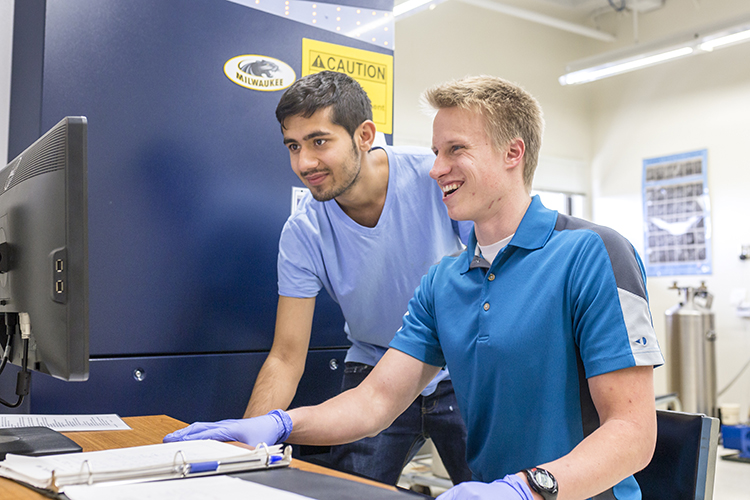
Nisrit Pandey is looking forward to a career exploring renewable energy, a field where he’s already done research. Pandey came to UWM from Kathmandu, Nepal, because he was looking to study in a diverse and international environment.
Pandey’s experiments, done in in the lab of Benjamin Church, associate professor of materials science and engineering, focus on such areas as energy storage and generation technologies, including lithium-ion batteries, AGM-lead acid batteries and alumina-forming steel for petrochemical plants.
“Dr. Benjamin Church regularly inspires students who want to enter the field of energy sciences,” said Pandey. “Working with him for the past three years has provided me with significant exposure in renewable energy, helping me jumpstart a career in the field.”
As a result of his UWM experiences, he was able to do a summer-long research internship at Technische Universität-Ilmenau in Germany as well as a summer internship at Johnson Controls. He recently received undergraduate first place and student choice awards at the College of Engineering and Applied Science Student Research Poster Competition. He also servies as president of Materials Advantage, a student organization representing his major. He has been awarded eight scholarships.
Pandey also is part of Honors College and values the experiences and the friendships he’s developed with other students in that program.
“The preparation I received in Honors College added a different perspective. It integrates humanities with engineering and science, so we are well-rounded and can view things from a different perspective.”
After graduation, he plans to pursue his doctorate in materials science and engineering, specializing in energy materials and public policy at Carnegi Mellon University.
Kirill Shmilovich
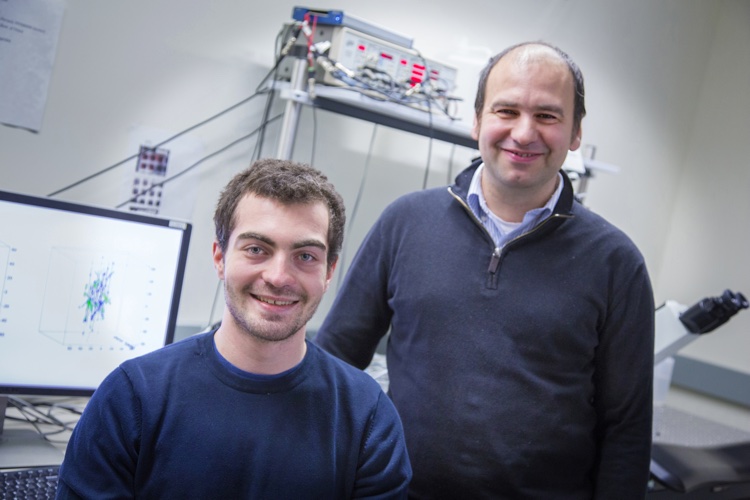
Kirill Shmilovich works with Ionel Popa, assistant professor of physics, studying how protein hydrogels respond to force.
Working with Popa in the Laboratory for Advanced Biopolymers and Nanomechanics of Proteins, Shmilovich is investigating the mechanical properties of protein hydrogels from modeling the nanoscale response to force of their constituent proteins. A better understanding of protein hydrogels could help expedite the development of customer-engineered artificial tissues and smart drug delivery systems.
Shmilovich’s help has been vital in helping develop mathematical models and establishing the instrumentation needed to study the protein hydrogels, says Popa.
Shmilovich received UWM’s Undergraduate Research Fellowship in Biology and Mathematics, and has interned at the Massachusetts Institute of Technology. He was one of 60 undergraduate researchers from across the country who were invited to Washington, D.C., for the annual Posters on the Hill event in April.
UWM’s proximity to his Whitefish Bay home was a driving factor in choosing the university, said Shmilovich. “I had initially planned to transfer elsewhere eventually, but I got involved in research and realized there were all these opportunities available that wouldn’t be available elsewhere because it’s not so easy to get involved in undergraduate research.”
“I chose to stay here because I felt like I could become more involved in research, and have a larger impact in my undergraduate career, opportunities I would not have otherwise had.”
Emily Gerstein
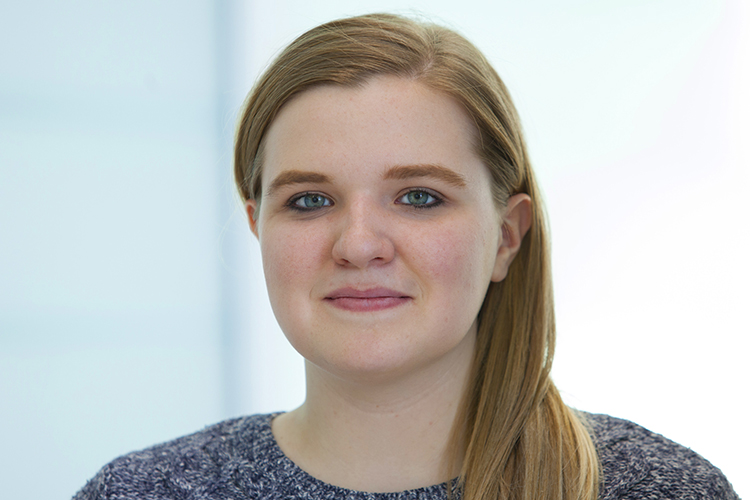
Emily Gerstein is a senior material science and engineering student working with Hugo Lopez, professor of engineering and material science, on the development of mathematical models capable of predicting rapid solidification phenomena in Co-Cr alloys for biomedical implants. Co-CR is an alloy of cobalt and chromium that is commonly used in orthopedic and dental implants.
These mathematical models help research the effects of cooling on elements in the hopes of decreasing the effects of wear and corrosion on these devices in the human body. Gerstein also did an internship with MetalTek International.
She felt the mentoring she received through UWM was vital. “I really felt even before I came here that people really cared who I was.”
Like many of these undergrad researchers, she took part in Honors College, which was a factor in her decision to come to UWM and, she says, enriched her experience. “I knew I would have these good connections with people here and industry and faculty. That really was kind of a deciding factor.”
“I thought it was really cool that my freshman year I could have discussions rather than sitting in a lecture hall with hundreds of people.”
Brandon Patterson
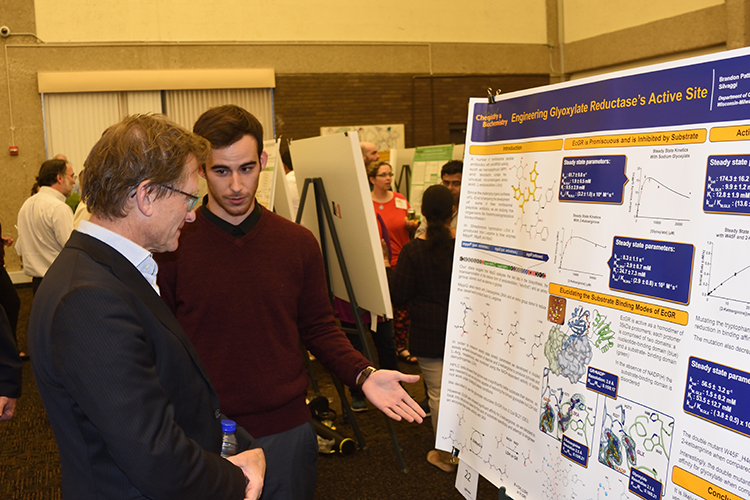
Brandon Patterson is a senior majoring in biochemistry and works for the Milwaukee Institute for Drug Discovery at UWM under Nicholas Silvaggi, associate professor of chemistry. Their research looks at the structural and mechanical properties of enzymes. One of the projects Patterson is working on focuses on an enzyme that could produce a major component of an antibiotic that is effective against MRSA, a staph bacteria that is resistant to antibiotics.
Patterson was the lone undergraduate participant in a poster display critiqued by visiting Nobel laureate Bernard Feringa in September 2017, one of the highlights of his UWM experience, Patterson said.
“Feringa’s lecture was so motivational. I’ve never had anyone direct my thought process like that about research. He was one of the most charismatic and humble scientists I’ve ever met,” said Patterson.
“He started rotating around the room, and when he got near and made eye contact, I asked him if we could take a picture. Then he turned around and was reading my poster. It felt like an eternity and I didn’t know if I should speak first. Then, when I finally began explaining it, my delivery was perfect. I honestly don’t know how that happened.”
Patterson started his research at UWM in Arsenio Pacheco’s inorganic chemistry lab in the summer of 2015. He plans to pursue his doctorate in biophysical chemistry.
